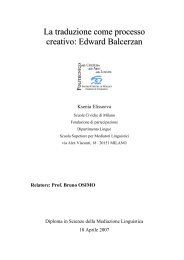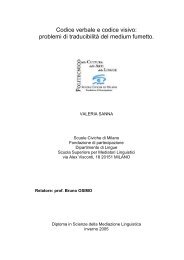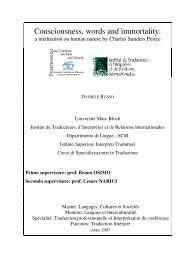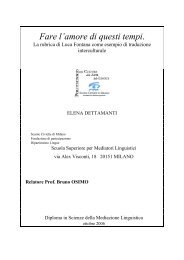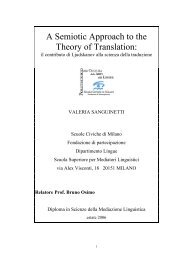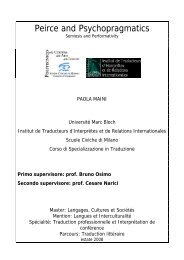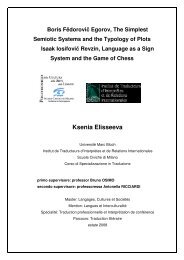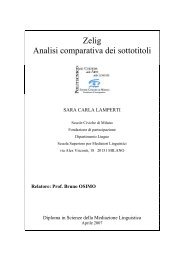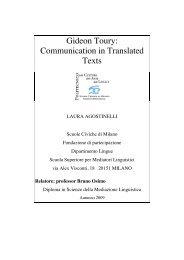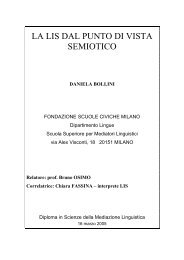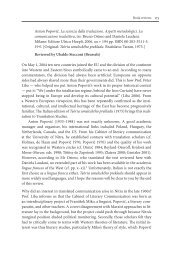Relatore: Professor Bruno OSIMO - Bruno Osimo, traduzioni ...
Relatore: Professor Bruno OSIMO - Bruno Osimo, traduzioni ...
Relatore: Professor Bruno OSIMO - Bruno Osimo, traduzioni ...
You also want an ePaper? Increase the reach of your titles
YUMPU automatically turns print PDFs into web optimized ePapers that Google loves.
translating, students identified problems more clearly and recognized they<br />
have a complex structure. Furthermore, evidence of strategic processing was<br />
more easily identifiable than in think-aloud protocols.<br />
As far as TAPs are concerned, advanced students were the best subjects,<br />
as their training had provided them with the metalanguage to discuss<br />
translation problems. This observation shows Matrat expects the subjects to<br />
provide sophisticated analyses, i.e. to introspect rather than to think aloud,<br />
which, in turn, reflects her interest in the emergence of metacognition.<br />
“One of the most puzzling findings is that none of the protocols showed<br />
evidence of decision-making strategies or decision criteria, whereas other TAP<br />
studies contain plenty of verbalizations on decision-making” (Jääskeläinen<br />
1999: 78). In fact, the subjects discussed problems, but were not able to decide<br />
on a solution, then moved on and never came back to the problem (Matrat<br />
1992). This may have been the result of time constraint or of the fact that the<br />
text was incomplete.<br />
In addition, the subjects’ interpretation of the purpose of the experiment<br />
may also have played a role: in one example of joint translation, one of the<br />
subjects said that the experimenters were interested in what subjects said and<br />
not in how they translated. This comment is important in relation to the<br />
methodological comparison: if the subjects felt that their ability to talk about<br />
translating was being investigated, they might have been intimidated by the<br />
demands of the task when translating alone, while it seems reasonable to<br />
assume that tackling the task together (and with some previous experience<br />
with the text) would be less face-threatening to the subjects.<br />
In sum, it seems that Matrat’s investigation in not only trying to compare<br />
the appropriateness of the two methods of data collection, but also to argue<br />
for the appropriateness of Vygotsky’s theory on human consciousness in<br />
relation with translation. This complicates the assessment of the validity of her<br />
methodological comparison.<br />
28



